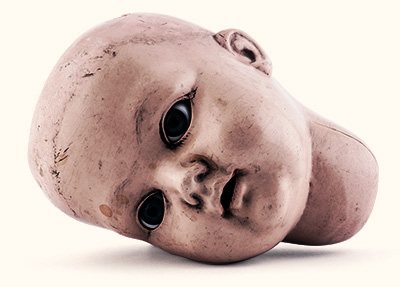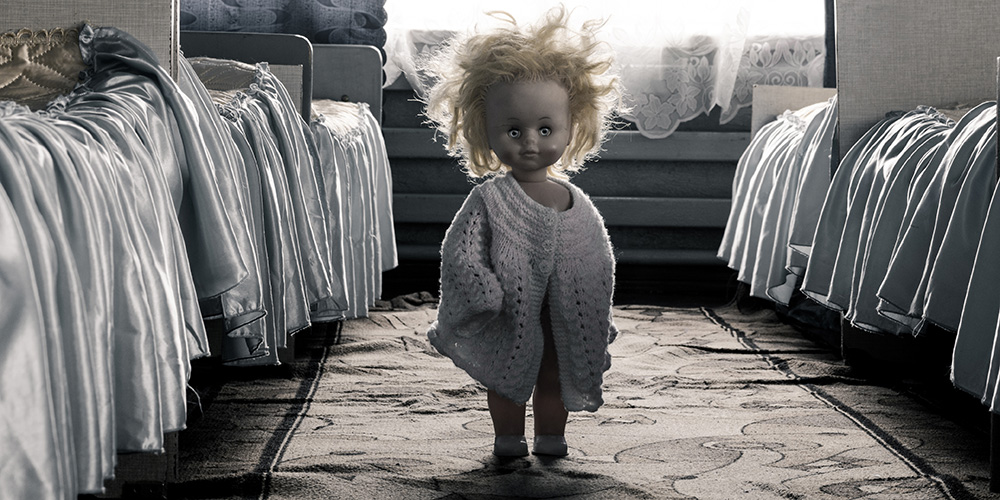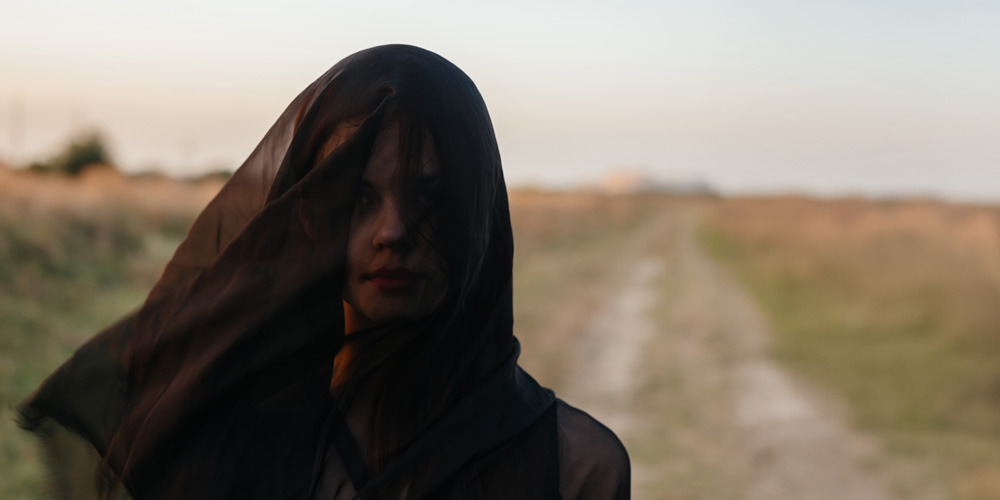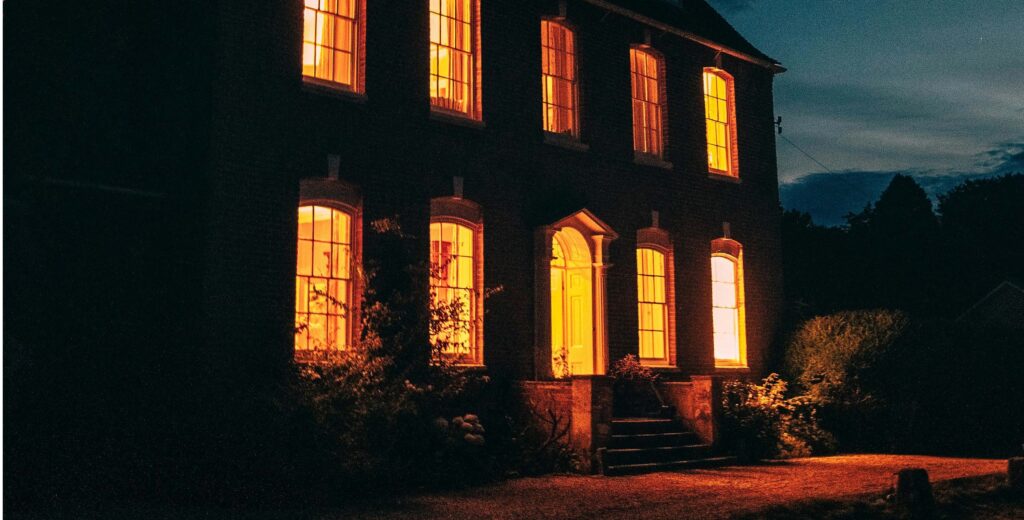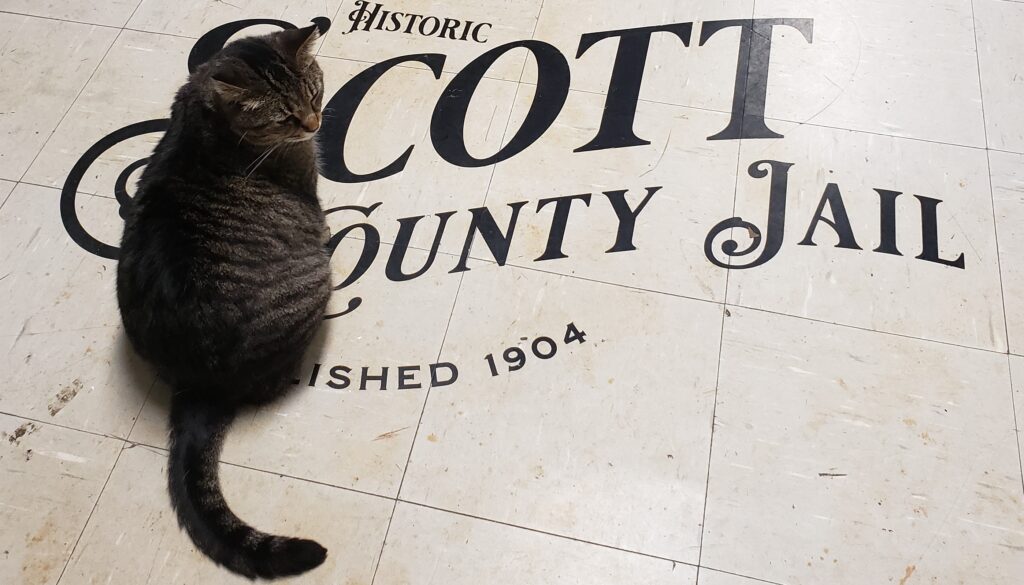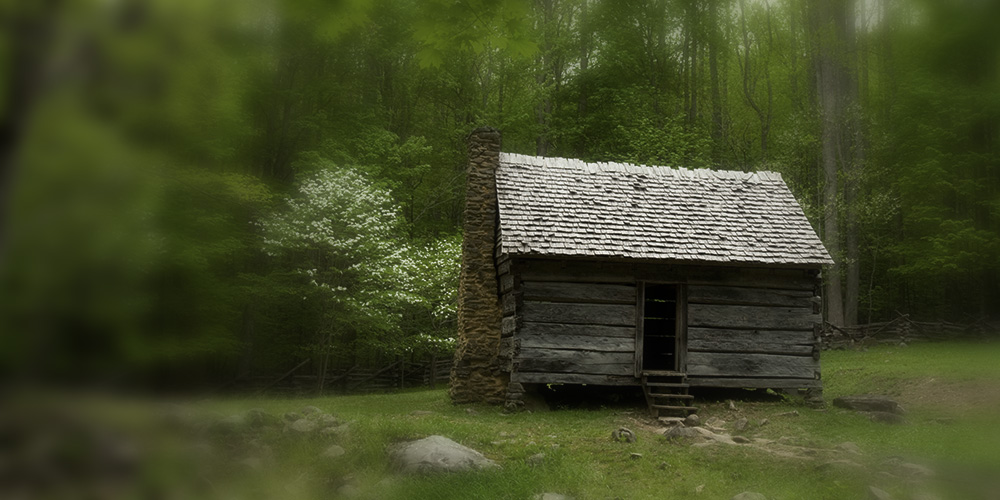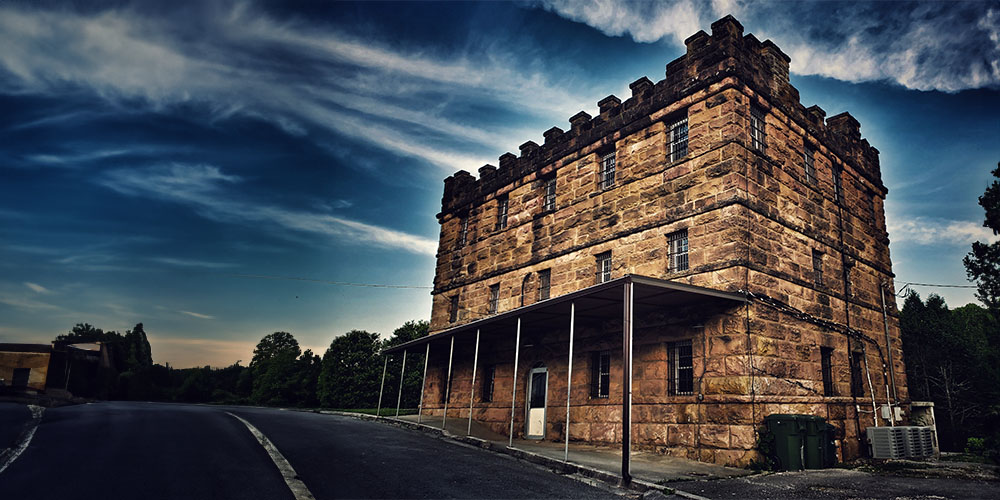You’ve heard of haint blue, but you’re not sure what that is. “Haint blue” is not a misspelling. And it’s not an exact color, either. It is, however, a unique hue from Southern folklore used to keep ghosts and demons out of your home.
Before you can understand what haint blue means, though, you need to know what a haint is.
Where did the word “haint” come from?
The word “haint” originated among the Gullah people in the Lowcountry of South Carolina. It sounds a lot like the word “haunt” for a reason. You see, a haint is a spirit or ghost that you don’t want coming around to bother you.
Over time, the word haint drifted into the lexicon of other groups living in South Carolina, and then into other states. Now, you’ll hear the word throughout the American Southeast. “Haint” is used in abundance in my home in the Tennessee Appalachians.
I like to argue that haint specifically refers to scary stuff. Happy ghosts, good entities, and Grandma’s spirit tottering around in the attic would not be considered haints. In paranormal Southern folklore, a haint is something you don’t want in your house. And, where I grew up, a haint could also refer to something less definable, such as a demonic spirit or an evil witch.
What is haint blue?
Haint blue is a light, sky-colored blue that keeps the nasties away. Because a haint can’t cross water. And when the haint sees this color, it gets all confused and thinks it’s next to a pond or ocean or something and goes away. Therefore, if you want to keep the haints out, you paint your porch ceiling this light blue color. Next time you visit a home in the south and see the porch ceiling painted haint blue, you’ll know why.

Throughout the south, and especially in the Lowcountry and Savannah, it’s common to see window frames and door frames painted a haint blue color as well (although you’ll have to head closer to Vermont if you want to see a witch window). After all, not all homes have porches, and ghosts like to come in through the doors and windows. But they can’t if they see that blue color in the way.

Does Haint blue really work to keep evil spirits out?
It can be tricky to determine if something works to keep evil spirits away, considering most of us without inherited psychic gifts can’t always sense their presence. But perhaps there was a point in history where the haint blue superstition had a non-supernatural explanation.
Was haint blue paint originally made with real indigo dye?
A main source of blue pigment for paint throughout history has been from the indigo plant. Indigo grows well in West Africa, a place where the risk of mosquito-borne malaria is pretty high. Before people understood that mosquito vectors cause a malaria infection, it likely felt reasonable to think that the illness could have been caused by bad luck, a.k.a. haints. We’ve heard that indigo just so happens to be a natural mild insect repellant. When a window frame is bathed in indigo, perhaps mosquitoes don’t come inside as much, and the people living in the home don’t get sick. Voila, haints repelled! The blue color may have originally been merely incidental to the application of indigo dye as a ward.
If this is indeed the source of the haint blue concept, it also makes sense that the idea would have become part of the paranormal folklore of the Southern US, where enslaved people had been taken from West Africa to work on plantations. Most superstitions are based on practical anecdotal observations, whose meaning and rationale mutated as they passed down the telephone line. African ghost stories might have been enough to perpetuate the practice, even as the possible anti-malaria benefits of blue indigo pigment faded from our collective memory.
What else can keep haints and ghosts out besides the blue color?
If the haints do get in before you have a chance to paint your door frames, don’t you fret. You can always paste newspaper to your walls in lieu of wallpaper. That gets the haints all confused and stuck. Haints like to read every word when they see a paper—they’ll be glued to that wall for ages.

You can also make a lot of clatter in your home to drive the haints away. Haints hate noise. Grab that old kettle and skillet and go to town banging on them with a metal spoon. Haints begone!
And once you’ve driven all the boogers away, go to your local paint store and get you a gallon of haint blue paint. Almost every place has their own concoction of this magical color. It’s soothing, it’s Southern, and it will keep the haints where they belong—away from your home.
Watch a haint blue cabin come to life!
Watch Becky hand-illustrate a cozy cabin that is definitely not haunted. Turn your sound on for Becky’s audio summary of this article about haint blue.
Paranormal Southern Folklore about the color Haint Blue
Have you ever lived in a house with haint blue porch ceilings or window sills? Do you believe haint blue works to repel evil spirits? Have you heard an alternate theory about the history of the superstition? Does your family tell stories or share folklore about evil ghosts being repelled by the color blue? If you have a ghost story related to haint blue, apply to be a guest on our show, so we can all have a spooky day!

